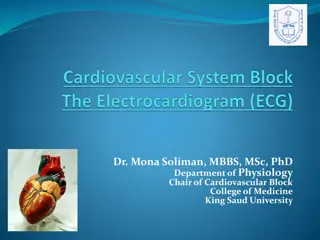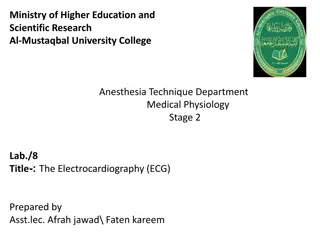Understanding the Normal Electrocardiogram (ECG) in Cardiovascular Physiology
Dr. Mona Soliman, MBBS, MSc, PhD from King Saud University explains the waves, intervals, and leads of a normal ECG in detail. The ECG records the heart's electrical activity, showcasing depolarization and repolarization waves. Learn about P-wave (atrial depolarization), QRS complex (ventricular dep
0 views • 24 slides
Understanding Nerve Action Potentials: Key Stages and Mechanisms
Explore the intricate process of nerve action potentials, including depolarization, overshoot variations, repolarization stages, and the role of ion levels. Delve into the details of how neurons generate and propagate electrical signals essential for communication in the nervous system.
1 views • 63 slides
Understanding Membrane Potential and Action Potentials in Excitable Cells
Membrane potential, resting potential, and action potentials play crucial roles in the functioning of excitable cells like neurons, muscle cells, and endocrine cells. Voltage-gated channels, depolarization, and repolarization are key processes involved in generating and propagating action potentials
0 views • 26 slides
Understanding Electrocardiography (ECG) in Medical Physiology Stage 2 Lab
Electrocardiography (ECG) is a vital tool for recording the electrical activities of the heart muscle. This process involves detecting depolarization and repolarization through various waves such as P-wave, QRS complex, and T-wave. Understanding ECG components like PR segment, ST segment, and U-wave
0 views • 10 slides



